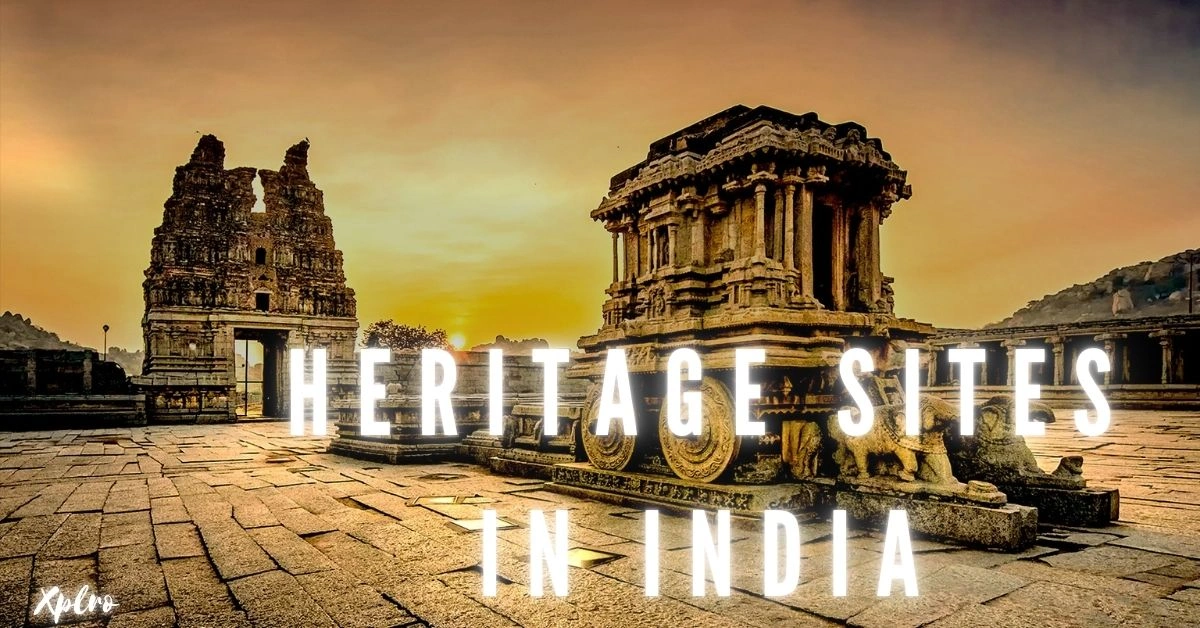Top 10 Heritage Sites to Visit in India – India has a long and rich history, and its heritage sites beautifully reflect its glorious past. From ancient temples to majestic forts and UNESCO World Heritage Sites, these landmarks tell stories of India’s culture, religion, and architecture. Whether you’re a history lover or just curious about the past, these 10 must-visit historical places in India are worth your time.
Each site offers a glimpse into a different era, giving you a chance to walk through centuries of tradition.
They are not just monuments—they’re living stories carved in stone. At Xplro.com, we bring you the top heritage destinations to explore across India, with insider tips and travel ideas to make your trip unforgettable.
- Quick View By Xplro: Heritage Wonders at a Glance
- 1. Taj Mahal, Agra
- 2. Qutub Minar, Delhi
- 3. Ajanta and Ellora Caves, Maharashtra
- 4. Hampi, Karnataka
- 5. Khajuraho Temples, Madhya Pradesh
- 6. Fatehpur Sikri, Uttar Pradesh
- 7. Red Fort, Delhi
- 8. Mahabalipuram, Tamil Nadu
- 9. Sanchi Stupa, Madhya Pradesh
- 10. Rani ki Vav, Gujarat
- 📊 Iconic Structures by Time Period
- FAQs
Quick View By Xplro: Heritage Wonders at a Glance
Want to explore India’s historical gems without the overwhelm? This quick snapshot by Xplro.com helps you plan your heritage journey with ease—organized by era, location, and cultural significance.
Discover detailed travel guides, tips, and hidden facts about each site only on Xplro.com — your trusted companion for heritage travel in India.
| Site | Location | Best Time to Visit | Known For |
|---|---|---|---|
| Taj Mahal | Agra, Uttar Pradesh | November to February | Symbol of love, Mughal architecture |
| Qutub Minar | Delhi | October to March | Tallest brick minaret |
| Ajanta & Ellora Caves | Maharashtra | June to March | Rock-cut temples, ancient art |
| Hampi | Karnataka | October to March | Vijayanagara Empire ruins |
| Khajuraho Temples | Madhya Pradesh | October to February | Erotic carvings, Nagara architecture |
| Fatehpur Sikri | Uttar Pradesh | November to March | Red sandstone Mughal city |
| Red Fort | Delhi | October to March | Mughal palace, Indian Independence Day |
| Mahabalipuram | Tamil Nadu | November to February | Dravidian rock-cut temples |
| Sanchi Stupa | Madhya Pradesh | November to March | Ancient Buddhist architecture |
| Rani ki Vav | Gujarat | October to February | Ornate stepwell architecture |
1. Taj Mahal, Agra
- Where: Agra, Uttar Pradesh
- Best Time: November to February
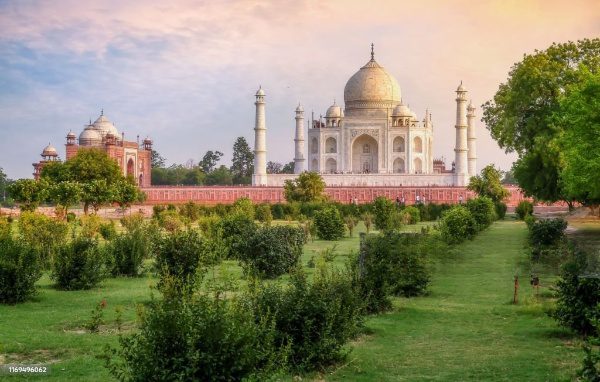
The Taj Mahal is one of the world’s most famous monuments. It’s a UNESCO World Heritage Site and a symbol of love. Mughal Emperor Shah Jahan built it for his wife, Mumtaz Mahal. This white marble mausoleum is a beautiful piece of architecture. The intricate details, writing, and symmetry make it one of the most stunning buildings in the world.
What to see:
- Gemstones inlaid on the marble
- Symmetrical gardens
🔍 Highlights:
- Marble dome with inlaid gemstones
- Changing hues from sunrise to sunset
- Persian-style symmetrical gardens
🧠 Fun Fact: The Taj appears pink in the morning and golden at sunset!
2. Qutub Minar, Delhi
- Where: Delhi
- Best Time: October to March
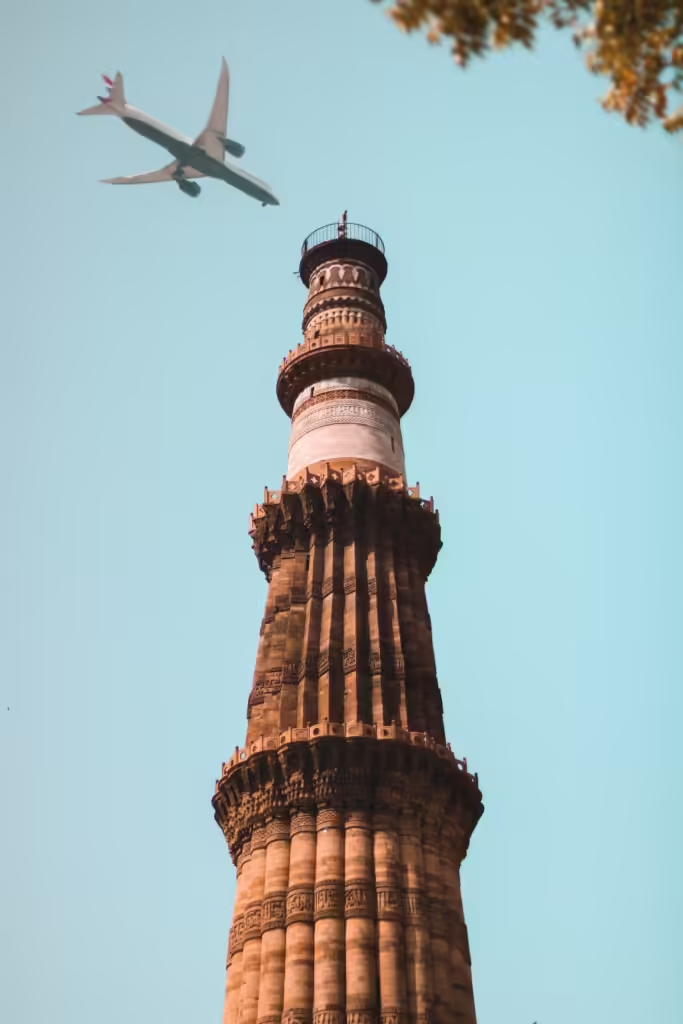
The Qutub Minar is the world’s tallest brick minaret. It’s a beautiful example of Indo-Islamic architecture. Qutb-ud-din Aibak built it in the 12th century. It’s part of the Qutub Complex, a UNESCO World Heritage Site. The intricate carvings and verses from the Quran on the minaret make it an architectural wonder.
What to see:
- Intricate carvings
- Surrounding ruins
🔍 Highlights:
- Red sandstone brilliance
- Arabic calligraphy carvings
- Surrounding ruins of ancient mosques
🧠 Fun Fact: It commemorates Muhammad Ghori’s victory over Prithviraj Chauhan.
3. Ajanta and Ellora Caves, Maharashtra
- Where: Maharashtra
- Best Time: June to March
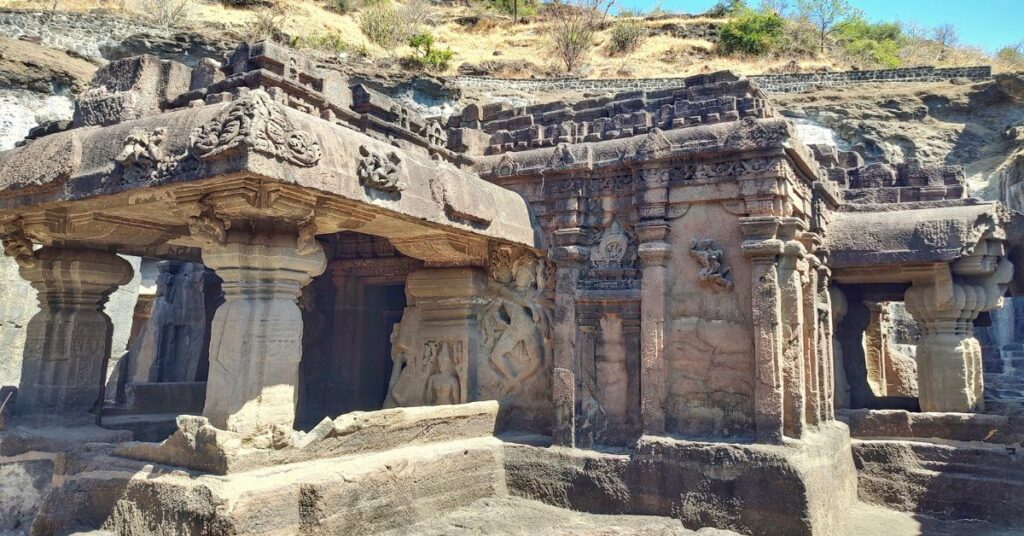
These caves are amazing examples of rock-cut architecture. They’re considered some of the best ancient Indian art. The Ajanta Caves have Buddhist monasteries and murals, while the Ellora Caves represent Hindu, Buddhist, and Jain religions. Both are UNESCO World Heritage Sites.
What to see:
- Frescoes
- Rock-cut temples
🔍 Highlights:
- Cave paintings and frescos
- Kailasa Temple carved from one rock
- Meditative, spiritual ambiance
🧠 Fun Fact: Ellora’s Kailasa Temple is the world’s largest monolithic structure!
4. Hampi, Karnataka
- Where: Karnataka
- Best Time: October to March
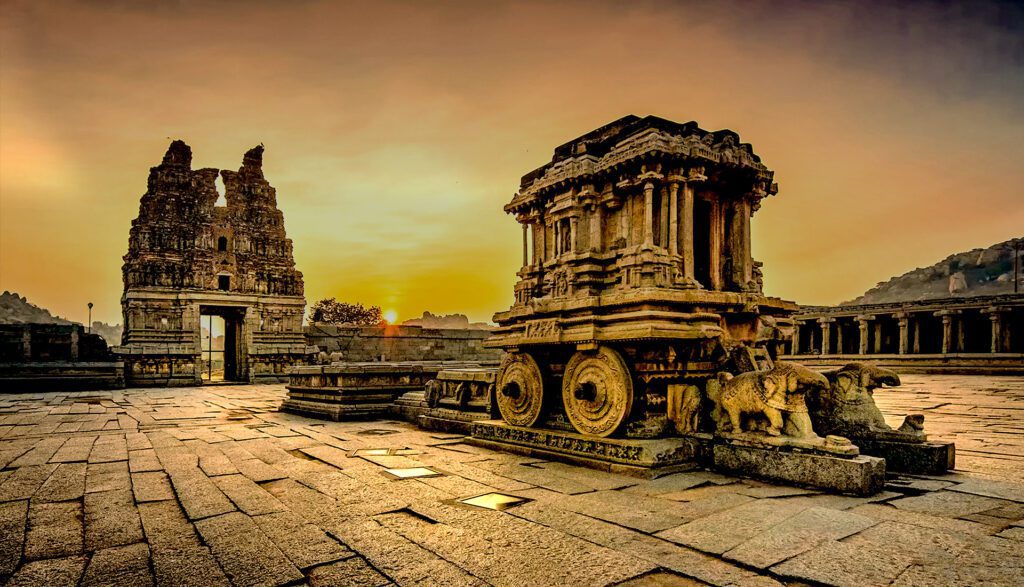
Hampi was the capital of the powerful Vijayanagara Empire. It’s a big UNESCO World Heritage Site with temples, palaces, and old marketplaces. Its boulders and amazing ruins make it a great place for history lovers and explorers.
What to see:
- Virupaksha Temple
- Vittala Temple
- Stone chariots
🔍 Highlights:
- Iconic stone chariot at Vittala Temple
- Sunset views from Matanga Hill
🧠 Fun Fact: At its peak, Hampi was richer than Rome.
5. Khajuraho Temples, Madhya Pradesh
- Where: Madhya Pradesh
- Best Time: October to February
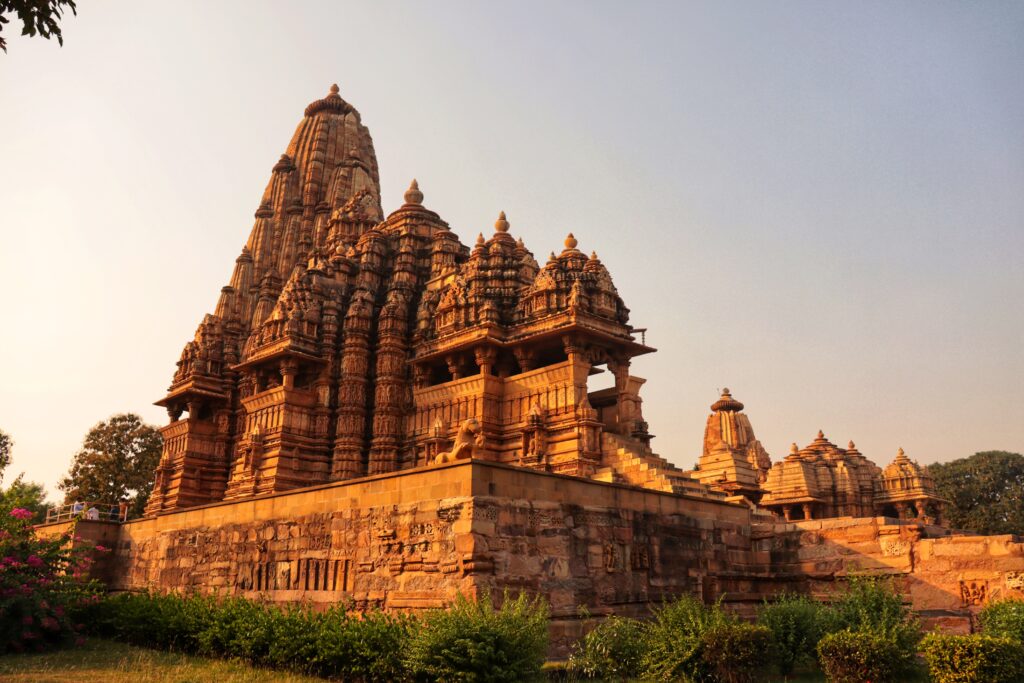
The Khajuraho Group of Monuments is famous for its detailed erotic sculptures. It’s a UNESCO World Heritage Site. These Hindu and Jain temples were built between 950 and 1050 AD by the Chandela dynasty. They’re known for their beautiful carvings and detailed iconography.
What to see:
- Detailed sculptures
- Nagara-style architecture
🔍 Highlights:
- Hindu and Jain temples side-by-side
- Artistic mastery in sandstone
🧠 Fun Fact: Only 20 of the original 85 temples survive today.
6. Fatehpur Sikri, Uttar Pradesh
- Where: Uttar Pradesh
- Best Time: November to March
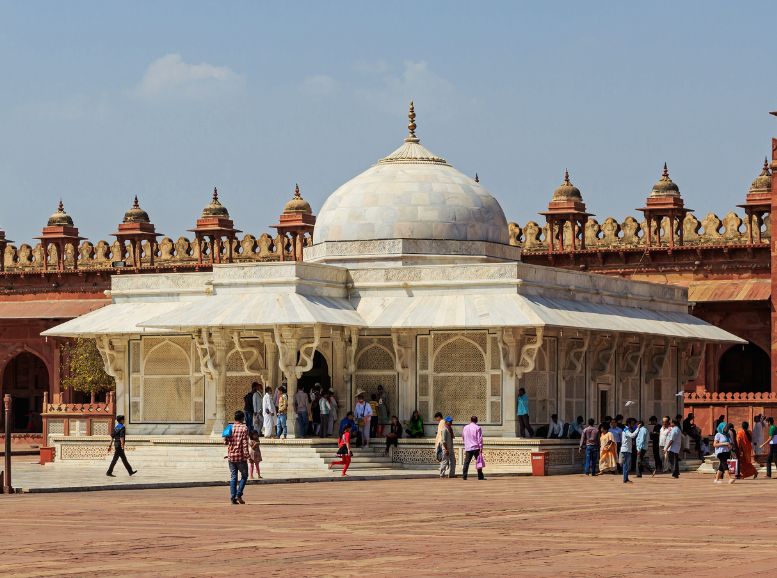
Fatehpur Sikri was the capital of the Mughal Empire under Emperor Akbar. It’s a UNESCO World Heritage Site. This red sandstone city is famous for its beautiful architecture, including palaces, mosques, and public buildings. The Buland Darwaza, Jama Masjid, and the Tomb of Salim Chishti are some of the highlights.
What to see:
- Buland Darwaza
- Diwan-i-Khas
- Panch Mahal
🔍 Highlights:
- Panch Mahal’s layered pavilions
- Marble Tomb of Salim Chishti
🧠 Fun Fact: Abandoned after just 14 years due to water scarcity.
7. Red Fort, Delhi
- Where: Delhi
- Best Time: October to March
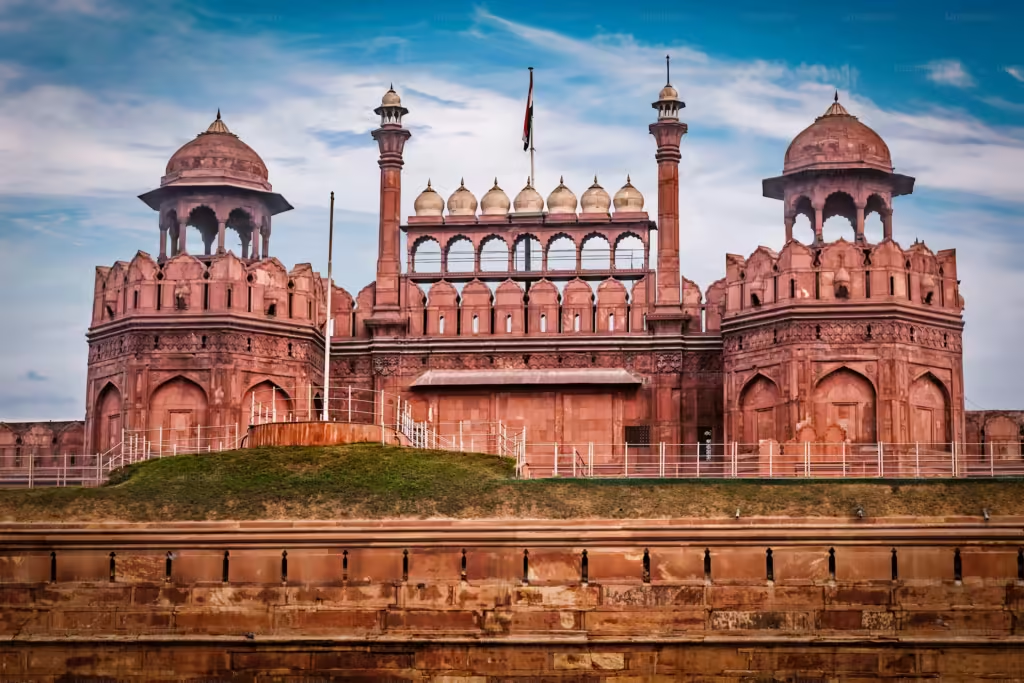
The Red Fort was built by Emperor Shah Jahan in 1648. It’s a symbol of India’s independence. This UNESCO World Heritage Site was the main residence of Mughal emperors for almost 200 years. The fort’s big red sandstone walls, beautiful interiors, and historical importance make it a must-visit heritage site.
What to see:
- Lahori Gate
- Diwan-i-Am
- Mumtaz Mahal
🔍 Highlights:
- Ornate Mughal interiors
- Sound and light shows at night
🧠 Fun Fact: India’s PM hoists the flag here every Independence Day.
8. Mahabalipuram, Tamil Nadu
- Where: Tamil Nadu
- Best Time: November to February
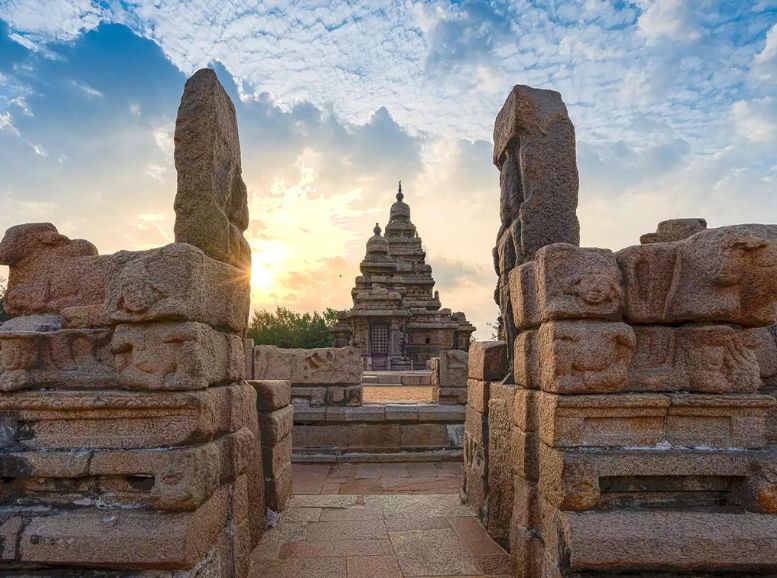
Mahabalipuram, also called Mamallapuram, is famous for its rock-cut temples and monuments from the Pallava dynasty. The Shore Temple and the Pancha Rathas are some of the highlights. It’s a UNESCO World Heritage Site known for its Dravidian architectural style.
What to see:
- Shore Temple
- Pancha Rathas
- Rock-cut sculptures
🔍 Highlights:
- Bas-reliefs like Arjuna’s Penance
- Rock-cut chariots
- Temple silhouette against Bay of Bengal
🧠 Fun Fact: The Shore Temple survived the 2004 tsunami almost untouched.
9. Sanchi Stupa, Madhya Pradesh
- Where: Madhya Pradesh
- Best Time: November to March
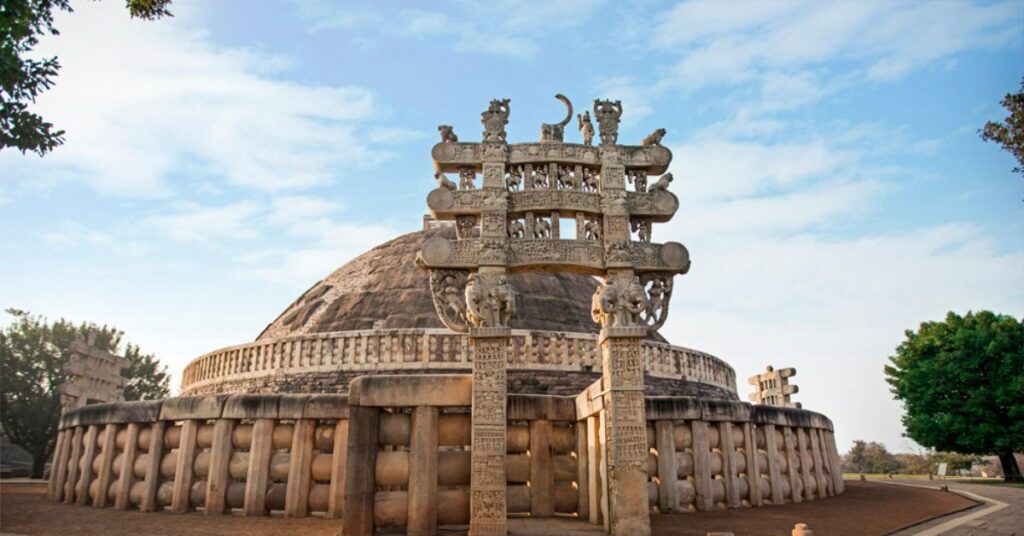
The Sanchi Stupa is one of India’s oldest stone structures and a major Buddhist monument. It was built during Emperor Ashoka’s rule in the 3rd century BC. The Great Stupa is surrounded by beautifully carved gateways that show the life of Buddha.
What to see:
- Great Stupa
- Ashoka Pillar
- Intricately carved gateways
🔍 Highlights:
- Depictions of Buddha’s life
- Peaceful green surroundings
🧠 Fun Fact: Forgotten for centuries, it was rediscovered in 1818.
10. Rani ki Vav, Gujarat
- Where: Patan, Gujarat
- Best Time: October to February

Rani ki Vav is a beautiful stepwell in Patan, Gujarat. It’s a UNESCO World Heritage Site and a great example of underground architecture. It has detailed carvings and sculptures. King Bhima I built it in the 11th century for his queen. The stepwell was a water reservoir.
What to see:
- Intricate carvings
- Seven levels of stairways
🔍 Highlights:
- More than 500 motifs and panels
- Unmatched subterranean symmetry
🧠 Fun Fact: Recognized as the cleanest iconic place in India by the government.
📊 Iconic Structures by Time Period
At Xplro.com, we’ve curated this quick-reference table to help you explore India’s most iconic historical structures based on the era they belong to. Whether you’re planning a heritage tour or brushing up on history, this guide will point you in the right direction.
| Site | Century Built | Dynasty/Empire |
|---|---|---|
| Sanchi Stupa | 3rd century BC | Maurya (Ashoka) |
| Mahabalipuram | 7th–8th | Pallava |
| Qutub Minar | 12th | Ghurid/Sultanate |
| Khajuraho | 10th–11th | Chandela |
| Rani ki Vav | 11th | Solanki |
| Red Fort / Taj Mahal | 17th | Mughal |
| Hampi | 14th–16th | Vijayanagara |
| Ajanta & Ellora | 2nd BC–6th AD | Satavahana–Rashtrakuta |
| Fatehpur Sikri | 16th | Mughal |
Conclusion, Heritage Sites to Visit in India
India’s rich history and diverse cultural heritage are beautifully reflected in its heritage sites. From ancient temples and forts to grand mausoleums and palaces, these Top 10 Heritage Sites to Visit in India offer a glimpse into the country’s architectural, cultural, and historical evolution. Each site tells a unique story, leaving visitors with a deeper understanding of India’s past and a sense of awe at its timeless beauty. Visit Xplro.com to plan your journey and discover the wonders of India’s heritage sites.
FAQs
1. What are some of the most famous heritage sites to visit in India?
- India is renowned for its rich history, with several prominent heritage sites worth visiting. Some of the most famous include the Taj Mahal in Agra, the Qutub Minar in Delhi, the Ajanta and Ellora Caves in Maharashtra, Hampi in Karnataka, and the Khajuraho Temples in Madhya Pradesh. These heritage sites showcase India’s architectural brilliance and historical legacy, making them must-visit destinations for travelers.
2. How many UNESCO World Heritage Sites are there in India?
- India has a total of 40 UNESCO World Heritage Sites, ranging from historical monuments to natural wonders. These heritage sites to visit in India include the iconic Taj Mahal, the ancient Ajanta Caves, and natural reserves like Kaziranga National Park. Each site offers a glimpse into India’s diverse history and geography.
3. What is the best time to visit heritage sites in India?
- The best time to explore heritage sites to visit in India is during the winter months, from October to March. During this period, the weather is pleasant, making it ideal for sightseeing. Summers can be extremely hot, especially in northern regions, which might make visiting heritage sites like the Taj Mahal or Qutub Minar more challenging.
4. Do you have to pay an entry fee to visit heritage sites in India?
- Yes, most heritage sites to visit in India charge an entry fee. For example, the Taj Mahal entry fee is ₹50 for Indian nationals and ₹1100 for foreign tourists. Other heritage sites, like Qutub Minar and Hampi, also have entry fees that vary depending on nationality. It’s best to check the current fees before visiting.
5. Are there guides available at India’s heritage sites?
- Guides are available at most heritage sites to visit in India, especially at popular destinations like the Taj Mahal, Fatehpur Sikri, and Hampi. These guides, often government-authorized, provide insightful historical information. Many heritage sites also offer audio guides in various languages, allowing visitors to explore at their own pace.
6. Which heritage site in India is ideal for families?
- Among the various heritage sites to visit in India, Fatehpur Sikri and Qutub Minar are particularly family-friendly. Their expansive open spaces allow for exploration and learning, making them engaging for both adults and children. These sites offer a mix of adventure and education, making them perfect for family outings.
7. What is the appropriate dress code when visiting heritage sites in India?
- When visiting heritage sites to visit in India, particularly temples and religious landmarks like Khajuraho and Hampi, it’s advisable to dress modestly. Visitors should wear clothing that covers the shoulders and knees. Additionally, wearing comfortable shoes is essential, as many heritage sites require walking and, in some cases, climbing.
8. Which is the most visited heritage site in India?
- The Taj Mahal is the most visited heritage site to visit in India. It attracts millions of visitors each year due to its architectural magnificence and its recognition as a symbol of eternal love. As a UNESCO World Heritage Site, the Taj Mahal continues to captivate both domestic and international tourists.
9. Are heritage sites in India accessible to people with disabilities?
- While some heritage sites to visit in India are working towards becoming more accessible, not all are fully equipped for visitors with disabilities. For example, the Taj Mahal provides ramps and wheelchairs for easier access. However, other heritage sites, such as the Ajanta Caves, may pose challenges due to uneven terrain. It’s recommended to plan ahead and inquire about accessibility options.
10. Can I take photographs at India’s heritage sites?
- Yes, photography is generally allowed at most heritage sites to visit in India. However, restrictions may apply at certain locations. For instance, photography without flash is encouraged in the Ajanta Caves to protect the ancient murals, while some sites may restrict the use of professional equipment like tripods. It’s important to follow the rules specific to each site.
11. Which heritage site in India is best for architecture enthusiasts?
- For architecture lovers, the Khajuraho Temples and the Ajanta and Ellora Caves stand out as top heritage sites to visit in India. The Khajuraho Temples are famous for their intricate carvings and sculptures, while the rock-cut architecture of the Ellora Caves, particularly the Kailasa Temple, is a marvel of ancient engineering.
12. What is an underrated heritage site in India that I should visit?
- Among the many heritage sites to visit in India, Rani ki Vav in Gujarat is often considered an underrated gem. This stepwell, a UNESCO World Heritage site, is a stunning example of subterranean architecture with its intricate carvings and design. Though not as famous as the Taj Mahal, it’s a hidden treasure that offers a unique historical experience.




